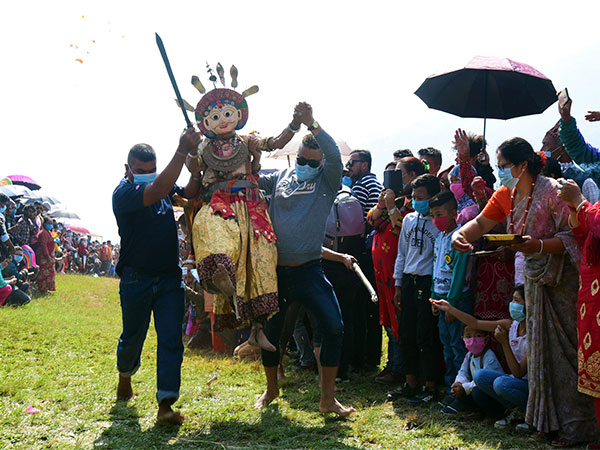Khokana's Shikali Jatra: A Dance of Deities and Ancient Traditions
The medieval town of Khokana celebrates Shikali Jatra, a vibrant festival replacing Dashain, with dynamic dances honoring Hindu deities. Featuring masked performances, sacrificial rituals, and cultural stories, it marks a post-harvest celebration, believed to protect the town and promote cultural unity.

- Country:
- Nepal
The medieval town of Khokana recently transformed into a hub of cultural fervor with the celebratory 'Shikali Jatra.' This vibrant traditional festival serves as an alternative to the Dashain festival, running over five days with spirited features such as masked dancers showcasing various Hindu deities in elaborate performances around the Shikali temple, venerating the goddess known as Shikali, Ajima, or the Mother Goddess. Festivities launched with a vibrant procession featuring the Goddess Rudrayani, also regarded as Shikali, paraded through the village in a wooden chariot, eventually resting at the temple amid sacred rituals involving various copper vessels.
The event, renowned for its incorporations of Tantric rituals, brings together 14 vividly masked deities from the Hindu Pantheon and priests clothed in ceremonial white robes. Bekhanar Maharjan, a priest presiding over the festival, explained the rituals commence on the Tritiya of Ashoj, featuring the communal sacrifice of a male buffalo at the historic city gate by three appointed Guthis. Young Kumar boys are charged with collecting necessary ritual materials; three of them take on the responsibility of gathering blood offerings for the Shikali Temple, while the buffalo meat is distributed as Prasad among the Guthi on the following day. Celebrations further embody protective desires against misfortunes and rejoice in the culmination of the harvest season, with dances at the event expressing deep-rooted religious traditions and beliefs.
Highlighting the diverse themes of the dances, Tuesday's performances in front of the temple captivated the audience, notably including a narrative about a deities' quest to conquer a monster alongside a rendition from the Swosthani or Skanda Purana. During the Swosthani dance, a dramatic scene unfolds with Kumar attempting to reach Sumeru Parbat, only to face unforeseen challenges and an eventual encounter with the demon deity, Lakhe. This confrontational tale culminates with Hanuman intervening in the climactic battle, which ends indecisively due to exhaustion. As the event neared its peak on Fulpati, focus shifted to the town's patron deity, goddess Rudrayani, revered by many names including Maheshvari due to her association with Lord Mahesh (Shiva). Riddhi Tuladhar, a local participant, noted the influx of visitors and their opportunities to experience unique cultural learnings during the vibrant occasion.
(With inputs from agencies.)










